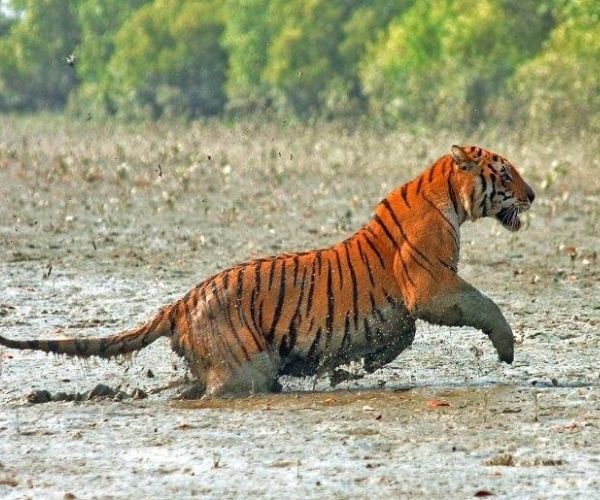Top 5 lesser known national parks in India
The diversity of Indian wildlife is not secondary to its African counterpart, perhaps superior in many ways. No wonder it is among the 17 mega diverse countries which has about 60-70% of bio-diversity on the planet. One cannot discount...

The diversity of Indian wildlife is not secondary to its African counterpart, perhaps superior in many ways. No wonder it is among the 17 mega diverse countries which has about 60-70% of bio-diversity on the planet. One cannot discount the heterogeneity of habitat. The Western ghats, and Himalayan regions are the gems of our rich heritage. Some very successful conservation programmes like, the Project Tiger, Project Elephant, Project Rhino, have ensured not only survival but we can safely say thriving population of many species in our Eco-system. In more than 100 national parks, 500 wildlife sanctuaries, India has the largest population of Royal Bengal Tigers in the wild, which happens to be our umbrella and Super Star species. Not lagging far behind are Asiatic Lions endemic to India, Asian Elephants, One Horned Rhinos, Snow Leopards, Himalayan Black Bears, and we are proud to be home to more than 1200 bird species.
Amongst the many famous National Parks in India, there are few lesser known gems offering range of flora and fauna. Let’s explore them for your next India wildlife adventure.
Sunderbans National Park
Formed by the Ganges River and Brahmaputra River deltas in the Bay of Bengal, the Sundarbans is the world’s largest mangrove forest and one of the most biologically productive of all ecosystems. Encompassing 513 square miles, Sundarbans National Park is situated within a larger UNESCO Biosphere Reserve and the Sunderbans Tiger Reserve. Many rare and endangered wildlife species call this region home, including the estuarine crocodile, Gangetic dolphin, Olive Ridley turtle, king cobra and Bengal tiger.

Approximately 100 Bengal tigers live in the watery world of the Sundarbans, having adapted to an almost amphibious life. They can swim long distances and feed on fish, crab, and water Monitor Lizards. It’s a unique landscape that attracts wildlife lovers who are mesmerized by the mangroves, waterways, birds, and rich biodiversity. The park is composed of 54 small islands and intersected by several distributaries of the Ganges river. The park is surrounded by a buffer zone of 885 square kilometers. This also mainly consists of mangrove forests. The core area of the park has its own natural boundaries with the river Matla on its West, the river Haribhanga on it’s East, with Netidhopani and Gosba in the North.
Little Rann of Kutch (Wild Ass Wildlife Sanctuary)
Dhangadhra Sanctuary also known as the Wild Ass Wildlife Sanctuary is located in the Little Rann of Kutch in the Gujarat state of India. It is spread over an area of 4954 km². The wildlife sanctuary was established in 1972 and came under the Wildlife Protection Act of 1972. The sanctuary is one of the last places on earth where the endangered wild ass sub-species Indian Wild Ass (Khur) (Equus hemionus khur) belonging to Asiatic Wild Ass Species Onager (Equus hemionus) can be spotted. Apart from wild ass, the sanctuary is also home to 32 other species of mammals such as chinkara, two types of desert fox, jackals, caracals, nilgais, Indian wolves, blackbucks, and striped hyenas along with 350 different species of birds, including the common crane, pelican and the lesser flamingo.

Hemis National Park
Hemis National Park is known by the name Hemis High Altitude National Park (1,700 sq. miles) and is the only national park in the country that is situated north of the Himalayas. Hemis National Park is known for being the second largest contiguous protected area (Nanda Devi Biosphere Reserve in Uttarakhand, India) in the entire country and is the largest National Park in South-Asia as well.

This dreamy National Park, Hemis is famous for its unique specialty, the snow leopard (schan in Ladakhi), and one of the few places to witness Eurasian brown bears and Tibetan wolves. Besides the fauna, uniquely fascinating floras are abundant in this Ladakh national park, which offers you a bundle of once-in-a-lifetime experiences. One can witness some rare and endangered mammals of the Indian Himalayas namely the Snow Leopard, Tibetan Wolf (also called wooly wolf, and Mongolian wolf), Argali or Great Tibetan sheep, Red Fox, Asiatic Ibex, Palla’s cat, Eurasian Brown Bear, Himalayan marmot, Bharal (Blue Sheep), Mountain (Pale) Weasels, Shapu (Ladakh urial), etc.
Manas National Park

Manas National Park is a Wildlife Sanctuary, UNESCO Natural World Heritage site, a Project Tiger Reserve, an Elephant Reserve and a Biosphere Reserve in Assam, India located in the Himalayan foothills, it is contiguous with the Royal Manas National park in Bhutan. Manas National Park is the home of 55 species of mammals (21 of them are India’s Schedule I mammals and 31 are threatened), 380 species of birds, 50 of reptiles, and three species of amphibians. The species of fauna of Manas National Park include Indian elephants, Indian rhinoceros, gaurs, Asian water buffaloes, barasingha, Indian tigers, Indian leopards, clouded leopards, Asian golden cats, dholes, capped langurs, golden langurs, Assamese macaques, slow loris, hoolock gibbons, smooth-coated otters, sloth bears, barking deers, hog deers, black panthers, sambar deers and chitals.
Singalila National Park
Singalila National Park is a national park of India located on the Singalila Ridge at an altitude of more than 7000 feet above sea level, in the Darjeeling district of West Bengal. It is well known for the trekking route to Sandakphu that runs through it. The park, which covers an area of 78.6 square kilometres and is a protected area, is well-known for its varied flora and fauna and is a favorite holiday spot for those who enjoy the outdoors and wildlife. The park is home to a variety of animals, including the red panda, clouded leopard, Himalayan black bear, and several species of birds. It is located at an altitude ranging from 7,900 feet to 12,000 feet above sea level. Another notable feature of Singalila National Park is its stunning rhododendron forests, which burst into colour in the spring.

Parinita Salaria is Co-Founder of Indus Bound. Indus Bound is an award-winning, specialist boutique travel company offering bespoke, luxury private India tours and tailor-made India holidays.
If you would like to be a guest blogger on A Luxury Travel Blog in order to raise your profile, please contact us.

 ValVades
ValVades 
































